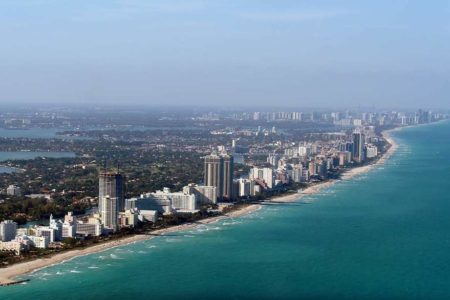
On October 12, 2019, a meeting of the Regional Council of Bourgogne-Franche-Comté was held in Dijon, a quiet town in central France. A woman wearing a long black veil was in the audience, apparently accompanying a group of students. All at once, the head of the National Rally party group at the Regional Council, Julien Odoul, rose and said that the presence of a woman wearing an Islamic headscarf in a public building was incompatible with the values of the French Republic:
“We are in a public building, we are in a democratic enclosure. Madame has all the time to keep her veil at home, in the street, but not here, not today. It’s the Republic, it’s secularism. It’s the law of the Republic, no ostentatious signs.”
He was neither threatening nor violent, yet his words immediately upset others in the room. A boy, apparently the son of the veiled woman, rushed crying into her arms. She then left the room slowly, accompanied by other children.
The event was immediately highlighted in newspapers and television throughout France. Odoul was described as a provocateur and a “despicable Islamophobic racist”. The leaders of French political parties asked Marine Le Pen, president of the National Rally party, to apologize and to expel Odoul from the party. She replied that Odoul had been “clumsy” and “should have remained silent”. She did not, however, expel him from the party.
A petition, “How far will we let hatred towards Muslims go?”, in the newspaper Le Monde, described France as “a country where Muslims are stigmatized” as “victims of racism”, “segregation” and “ostracism”. Without mentioning a recent terrorist attack at Paris police headquarters where four police employees were murdered by a colleague, Mickaël Harpon, a convert to Islam, the text denounced the decision of some public agencies to “monitor the signs of radicalization among their Muslim employees”.
The petition also did not mention that it was this attack that prompted public institutions to establish preventive measures. The petition was signed by 90 Muslim writers, actors and university professors, as well as a few non-Muslim intellectuals. Since then, more than 230,000 people have signed it.
A few days later, another petition, signed by a hundred Muslims, was published in the weekly Marianne. The entry was entitled, “The veil is sexist and obscurantist”. The entire text was about the Islamic headscarf:
“Wearing a veil is an ostentatious sign of a retrograde, obscurantist and sexist understanding of the Qur’an. Veiling women exists to stigmatize their presence in the public space”.
Since then, debates on the Islamic veil in France have proceeded non-stop.
From the US or the UK, such discussions might look strange, but France is a country where belonging to a religion has long been considered a private affair that absolutely must not invade the public sphere.
Additionally, the widespread appearance of the Islamic hijab in France is relatively recent. It has quickly become much more than the sign of a religion. Many now regard the veil as a banner of radical Islam, and as the symbol of an organized attempt profoundly to transform the society of France.
Attempts to bring the hijab into French schools and high schools on a large scale began in 1989. Soon after, Muslim organizations that had asked for students to have the right to wear the veil in schools also asked for a change in the school curriculum — in history, so that Muslim civilization would be presented in a more “correct” and “positive” way.
A few years after that, teachers began reporting to the Ministry of National Education that it was now impossible to talk about the Holocaust in class without being interrupted by Muslim students’ statements that were negative and anti-Semitic. The Ministry of National Education obligingly modified history programs; Muslim civilization is now described in French textbooks as having brought much to the world and to Europe. Any reference to the continuing practice of slavery in the Muslim world, or massacres committed by Muslim warriors, was withdrawn.
At the same time, as the Ministry of National Education remained deaf to what professors were reporting, several of them decided to write a book, Les Territoires perdus de la République (“The Lost Territories of the Republic”), published in 2002, under the direction of the historian Georges Bensoussan.
The book may have prompted Luc Ferry, Minister of National Education at the time, to ask an academic, Jean-Pierre Obin, to launch an investigation and write a report, which was delivered in September 2004. It emphasized that the situation was extremely serious; that history teachers could not talk about the Holocaust in the presence of Muslim students; nor could they talk about Israel or the Crusades. Furthermore, as the theory of evolution did not conform to the Koran, biology teachers, could not speak about evolution. Wherever Jewish students were in contact with Muslim students, the report continued, they were harassed, and when a serious incident took place, school officials did not punish the aggressors but instead advised Jewish parents to enroll their children somewhere else. Muslim girls, the report pointed out, did not wear a headscarf inside school, but an increasing number were not only wearing it as soon as they were outside the school grounds, but also harassing Muslim girls who did not wear one. The mainstream media immediately said that the report was “Islamophobic”. The report had no effect.
Meanwhile, the suburbs of large cities where Muslim communities were growing became neighborhoods where girls and women who did not wear the veil were insulted, assaulted, sometimes raped or even subjected to gang rapes in cellars. In Vitry, near Paris, in October 2002, an unveiled Muslim young woman, Sohane Benziane, 17, was burned alive. In Marseille, another unveiled Muslim woman, Ghofrane Haddaoui, 23, was stoned to death. When non-Muslim families, who did not want to submit to the law of gangs and Islamists, gradually left, the neighborhoods became places where every woman knew that to go out unveiled was dangerous.
To many, the veil became a sign of oppression against women, and associated with areas that were becoming no-go zones — zones urbaines sensibles (“sensitive urban zones”). In 2006, there were 751 of these in the country, where non-Muslims were generally excluded, apart from exceptional circumstances.
In these no-go zones, in the autumn of 2005, riots broke out. The French government was confronted with a situation beyond its control, and had to rely on Muslim organizations and imams to restore the calm. No-go zones had become autonomous Muslim areas on French territory.
In the years that followed, the Muslim population grew larger and Muslim organizations gained even more importance, especially the French branch of the Muslim Brotherhood — then called the UOIF (Union of Islamic Organizations of France), which is now called Muslims of France. Popular preachers, such as Hassan Iquioussen or Tariq Ramadan (since 2018, indicted for several rapes), said in the mosques that the hijab is an “Islamic obligation” stemming from the need for women to be “modest“. These preachers added that forcing Muslim women not to wear a veil in public spaces was a way to “force them to stay at home”. They accused whoever opposed the veil of wanting to “exclude” Muslim women from society. Muslim women belonging to those organizations began to repeat these views.
By now, the Islamization of France has gained considerable ground. Veiled women can be seen everywhere. Other women know that if they wear a dress or a skirt that might be seen as immodest, they run a risk. Zineb El Razhoui, a journalist who used to write for the French satirical magazine Charlie Hebdo, has said that all French women, including non-Muslim women, are now threatened. She went on to document the explosion of the number of sexual assaults in France: 235,000 complaints for rape or attempted rape were filed in 2018 — 62,000 more than in 2016. In 2005, 9,993 complaints of rape or attempted rape were filed, a figure at the time considered alarming.
The result is that El Razhoui has received thousands of death threats, in both Arabic and French.
Georges Bensoussan, in his book Une France soumise (“A Submitted France”), published 15 years after The Lost Territories of the Republic, noted what is happening to all French women: a widespread fear of going out alone, especially in the evening.
In debates on television, veiled Muslim women invited to speak say that wearing a veil is their “choice” and that the French must “adapt to Islam”.
On October 27, a demonstration against “Islamophobia” in Paris gathered hundreds of veiled women. They held signs saying, “If the way I dress disturbs you, leave my country” and “Stop the persecution of Muslims”. One of the organizers interviewed on television said:
“Muslims in France are suffering under growing persecution. They want to forbid us to be Muslims. France is our country. Those who do not like it must go elsewhere. “
On October 30, French President Emmanuel Macron claimed to react and gave an interview to the weekly Valeurs Actuelles. “I fight with all my strength against sectarianism”, he said, but immediately added, “I do not want to fall into a trap and I will never say: sectarianism equals Islam”.
A columnist, Ivan Rioufol, wrote in the daily Le Figaro that everyone knows the only sectarianism in France today is Islamic sectarianism and that those remarks were laughable. He also wrote, “The mechanism of intimidation is triggered …. Any criticism of Islam is now blasphemy.”
Macron is not the only person who avoids using the word “Islam”. All debate on the topic has disappeared from newspapers and television stations in France. Virtually all French journalists, when they speak of the no-go zones, use only the official term: “sensitive urban areas”.
The journalists note signs of “radicalization” among young people in the suburbs, but do not dare to say what kind of “radicalization”. When a knife attack is committed by a Muslim (knife attacks against passers-by are now frequent in France), the assailant is described as having committed an “inexplicable” act or as suffering from a mental disorder. Although the convert to Islam who murdered four police employees at the Paris police headquarters was originally described as having committed a “terrorist act”, a few days ago, the French Ministry of Justice said that a thorough examination of the facts had led the judges to conclude that what had happened was merely a “professional dispute” with no terrorist motive.
On October 31, the French Ministry of the Interior said that 33 policemen had been reported to their superiors as having been “radicalized”, yet they were not removed from the police force. When Alexandre Langlois, Secretary General of the Vigi Police Union, stated in June that the number of “radicalized” policemen in France is actually far larger, he received a year’s suspension.
It would be misleading to say that Muslims are persecuted in France. An official report on the figures of anti-religious acts in France in 2018 noted that more than a thousand anti-Christian acts had been committed; 541 anti-Semitic acts (64% more than in 2017), and 100 anti-Muslim acts. Details lead one to see that the anti-Christian acts were mostly acts of church vandalism; the anti-Semitic acts often consisted of cemetery desecrations and violent attacks against Jews, and that the anti-Muslim acts involved almost only anti-Muslim graffiti or laying slices of bacon at the entrance to a mosque or in the mailbox of a Muslim organization. No Muslims were physically attacked.
As Jews represent less than one percent of France’ population, the number of attacks against Jews is alarming. Sammy Ghozlan, president of National Office of Vigilance Against Anti-Semitism (BNVCA), said on television that almost all aggression against Jews had been committed by Muslims.
Since 2012, terrorist attacks by Islamists in France have claimed 263 lives. On October 29, an 84-year-old veteran, Claude Sinke, opened fire on the Bayonne mosque in southwestern France, and injured two people. That was the only violent attack against Muslims committed in France.
The only journalist who, in spite of court convictions and threats raining down on him, dares to speak openly about Islam, is Éric Zemmour. He has not yet been silenced. Those who have asked for his exclusion from the media have so far not met with success — but have not given up. Zemmour participates in a daily talk show on C News television channel. Several companies that advertised on C News tried to boycott the channel until he was removed. Most French political leaders declared that they would not accept an invitation from C News until Zemmour was fired. An article signed by several left-wing journalists was published on the web magazine Mediapart to demand the total and permanent exclusion of Zemmour from all media:
“It is criminal to give him access to any audience. Racism, calls to hatred and violence against minorities are crimes! Zemmour was sentenced for inciting hatred. Hatred! The crimes against humanity committed during World War II started with hate speech.”
Muslim organizations, calling for demonstrations in front of C News every week, also said that their rallies would last until Zemmour “disappears”. During a demonstration on November 2, one of the organizers, Abdelaziz Chaambi, listed in a police database for his ties to violent Islamic organizations, called Zemmour a “filthy monster” and a “Zionist bastard”. Chaambi was warmly applauded by the crowd.
Although C News has not, so far, bowed to the pressure, it nevertheless issued a statement that Zemmour’s programs would now be broadcast after lawyers carefully checked their contents to see that any controversial material was removed.
Those who accuse Zemmour of racism or inciting hatred and violence have never quoted a racist phrase or incitement to hate or violence by Zemmour: there are none. Zemmour was condemned for saying that “in innumerable French suburbs where many girls are veiled, a struggle to Islamize a territory exists”. In France today, saying that girls in the suburbs are veiled and that there is a desire to Islamize the territory ends up condemned by the courts.
Zemmour, seemingly pessimistic, said a year ago that he is “fight[ing] for the survival of France”, but fears it is “a battle already lost”. He has suggested that France is threatened not by a risk of “partition”, but by an inverted “colonization”. He could be proven right.
In September 2017, the economist Charles Gave published an article, “Tomorrow, the Demographic Suicide of Europe”, in which he explained that all data indicated that unless a deep and unlikely change occurs, France, before the end of the 21st century, will be predominantly Muslim. He added that the current Muslim minority will have such weight, that in thirty years, by 2050, France will have submitted to Islam. Demographers who study the issue, such as Michèle Tribalat, confirmed the finding. Gave was immediately denounced in the mainstream press as “Islamophobic” and as having adopted “foolish reasoning“.
Imams in French mosques and the Muslim world do not seem to think that Gave’s reasoning is foolish, and say it openly. On March 12, the imam of al-Aqsa Mosque in Jerusalem announced:
“In 2050, France will be an Islamic country. We believe that Muslims will have a country that will bring Islam, its guidance, its light, its message and its mercy to the people of the West through jihad, for the sake of Allah … At the time of the Ottoman Empire the Muslims had conquered Poland and Austria, and the call to prayer was recited there; the Islamic nation is able to recover its original identity, and spread Islam, Allah willing. The means at our disposal are the conversion to Islam and the payment of the jizya [protection tax, ed.], or we will ask the help of Allah to fight the infidels “.
The fight against the “infidels” is already underway.
A growing number of French citizens have been converting to Islam. Victor Loupan, a commentator on Christian radio Notre Dame, said:
“We don’t know the numbers. But if you walk the streets, you will be struck by the number of white European people wearing Islamist clothing “.
A French-Lebanese journalist, Maya Khadra, said in an interview on Al-Hurra television, that one of her friends had interviewed young French Muslims in the suburbs of Paris and asked them why they accepted money from the French state while saying that they hate France. They answered: “What they pay us is the jizya [Islamic protection tax]”.
One of Macron’s advisors, Yassine Belattar, recently said, before resigning on October 17,
“We are not in a project of assimilation. France must get used to the fact that we remain. They do not realize what we have prepared: that is our children”.
In an interview with a branch of Muslims of France called the Collective Against Islamophobia, Fatima E., the veiled woman challenged by Julien Odoul, said that her life was “totally destroyed”; that her son had “nightmares” and that she was planning to file a complaint for “public incitement to racial hatred”. A photograph of her with her son was widely circulated in French newspapers; she received thousands of messages of support. Referring to her complaint, a lawyer, Gilles-William Goldnadel, spoke of “outrageous victimization”. He noted that her son had attracted the attention of many journalists, but that the orphaned children of the four policemen murdered by Mickaël Harpon did not interest anyone.






Gordon Anderson
France and the whole EU have allowed immigrants who are not compatable with thelr culture and religion to flood the country. I think this will be a major problem eventually
Amanda Sanchez
muslims are taught to exemplify muhammad. He had slaves and married a seven year old. The marriage was consummated when she turned 9. Muslims are willing to trust their eternal salvation on the word of a SLAVE OWNER and CHILD MOLESTER. WHY can’t they see this?